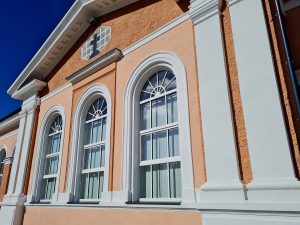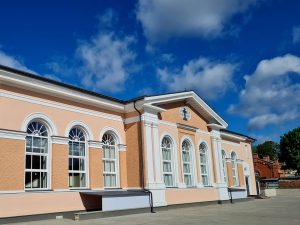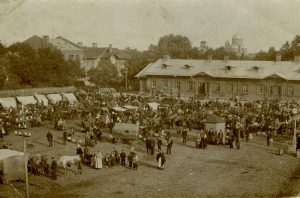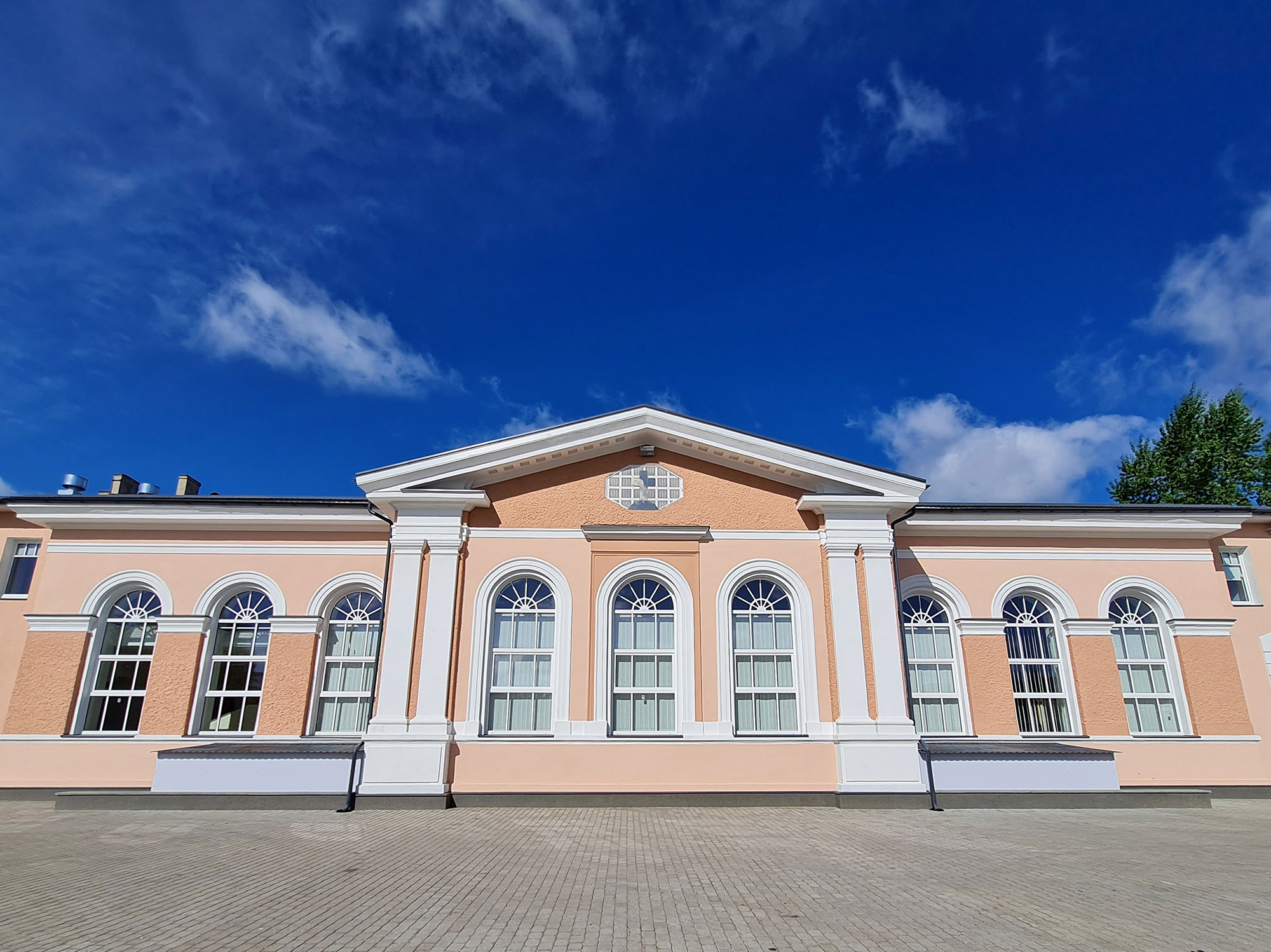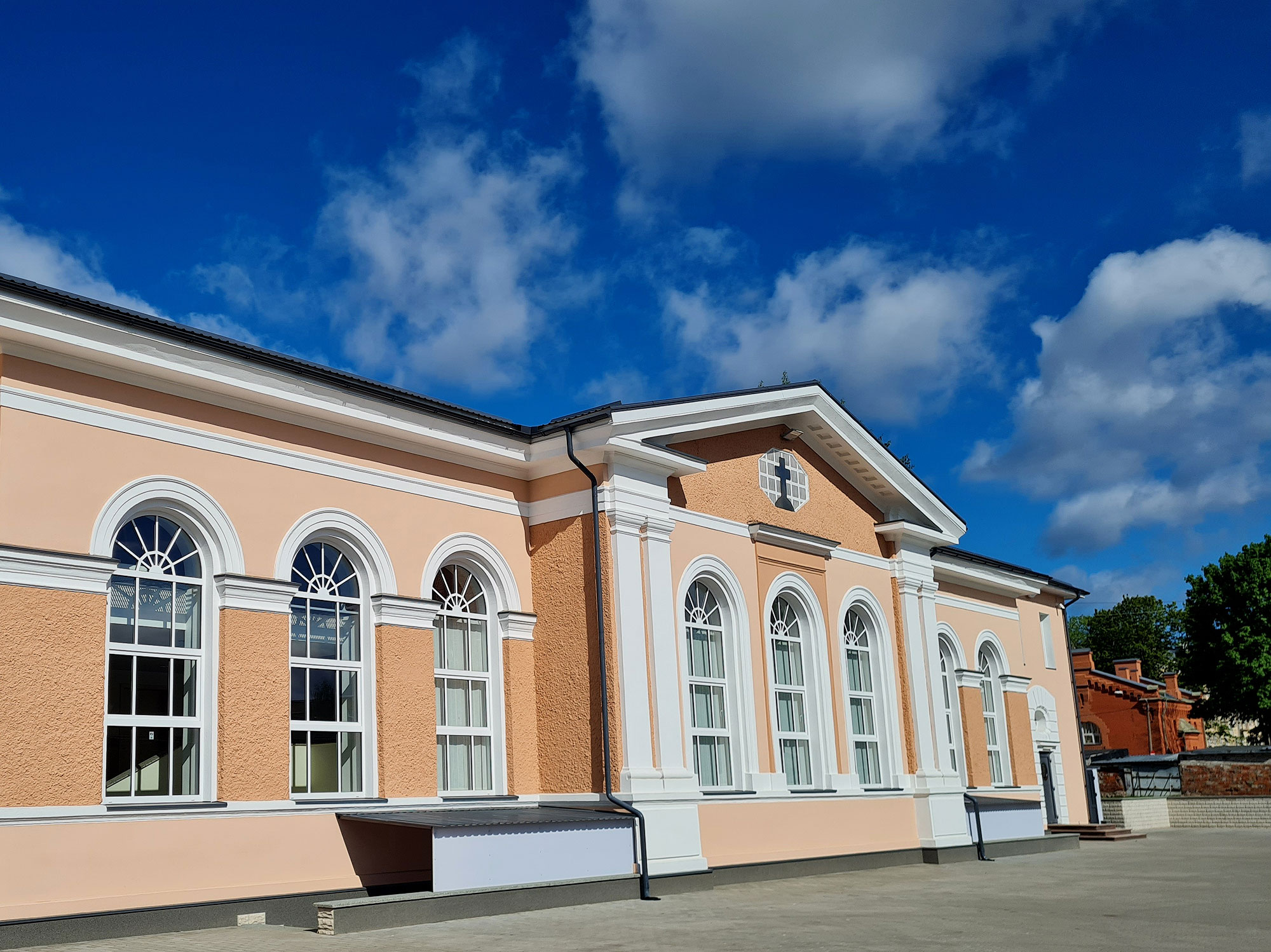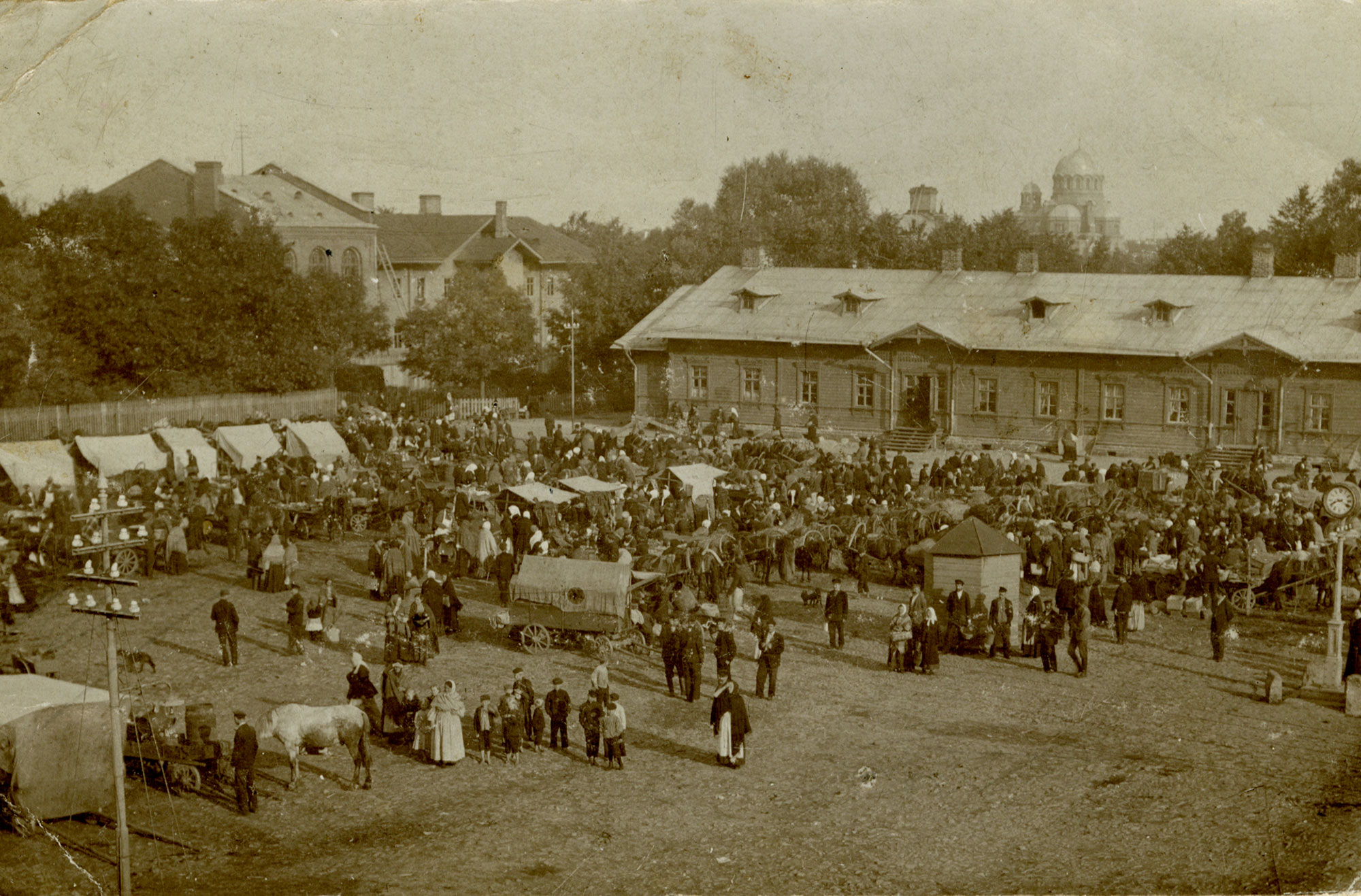The old market building, the facade of which remained quite well even decades later, was built during WWI, in 1916. It is a neoclassical one-storied building with a triangular pediment, rectangular columns and tall round-arched window openings.
The market appeared in Kreenholm immediately after the factory had been founded. It was a place where local farmers sold their products. Before WWI the number of employees of the Kreenholm manufacture exceeded 10,000 people and half of them lived with their families in the Kreenholm area, so there were a lot of customers. Since the 1880s, the magnificent red brick decoration of the Kreenholm market has always been mentioned as a special feature of the building.
In the 1920s and 1930s, the same building at different times housed a community center, one of the four cinemas in Narva, and Christomol (Christian Youth Association). During the Soviet period, the building functioned as a market again. Now it accommodates the Pentecostal church.
If Kreenholm had its own writer and its own novel, then these would be Eduard Vilde and his novel Iron Hands. To write this book about life in Kreenholm, the writer spent almost two years in Narva in the last years of the 19th century. He describes Kreenholm as he saw it. The protagonist of his novel, Villem, comes from the same region of Virumaa as Vilde himself. A young man and his daughter traveled from the countryside to the city on an “iron horse” (i.e. train). For a peasant, Kreenholm was simply a miracle:
„Holding Miina’s hand, he crossed the railroad tracks and walked along the wide, well-paved Joala street towards the large beautiful buildings of the Kreenholm factory, which he had seen from the train window. Father and daughter looked, curious, at the clean wide streets and the beautiful buildings among, where they soon found themselves. The magnificence of the picture that opened before the eyes of the village dweller, surpassed everything that he tried to imagine back home. It was not just a factory, surrounded by huts for workers, as he had vaguely imagined before – it was a whole city, and what a beautiful one! Intersecting streets, wide, straight and even, two- and three-storied stone and wooden houses, neatly painted or plastered, with numbers at the entrance, big gardens and small front gardens under the windows, and chimneys on top of every house! The streets led to spacious, well-paved squares; the sidewalks and even most of the pavement were covered with some kind of densely packed substance, black as tar – the peasant did not even know what it was called. The streets were straight and smooth – so smooth, that you could even dance on them. High poles with beautiful gas lamps were standing along the pavements; if in the evenings they all light up, you can go for a walk then, as if it’s daytime!”
Moreover, by 1900 gas lighting was gradually replaced by electric lighting. The story of Willem, leaving the village to work in the city, was nothing special at that time. Two out of three Kreenholm workers were Estonian peasants; and the third one would come from the St. Petersburg region.

